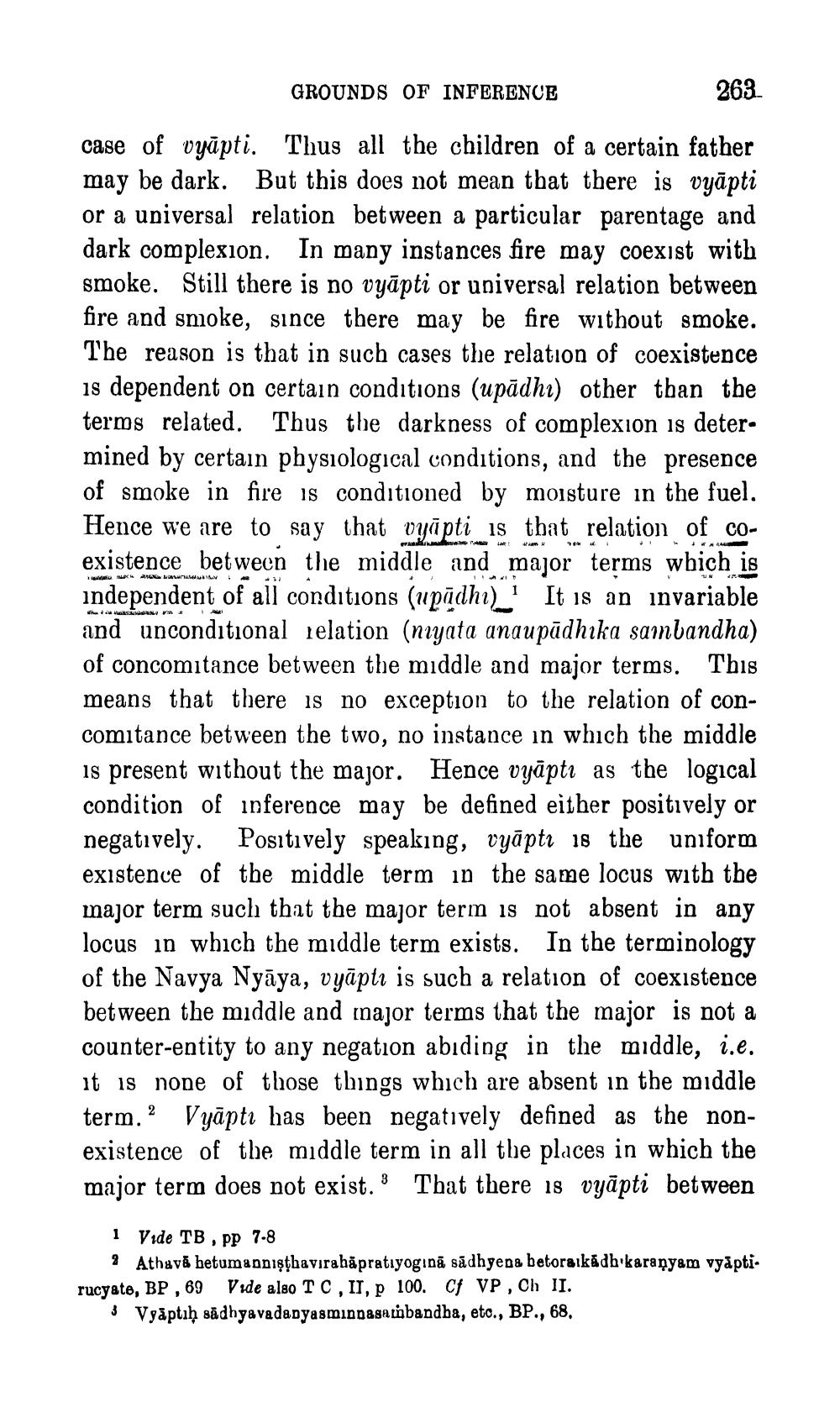________________
GROUNDS OF INFERENCE
263
WARM
NORN
case of vyāpti. Thus all the children of a certain father may be dark. But this does not mean that there is vyāpti or a universal relation between a particular parentage and dark complexion. In many instances fire may coexist with smoke. Still there is no vyāpti or universal relation between fire and smoke, since there may be fire without smoke. The reason is that in such cases the relation of coexistence is dependent on certain conditions (upādhi) other than the terms related. Thus the darkness of complexion is determined by certain physiological conditions, and the presence of smoke in fire is conditioned by moisture in the fuel. Hence we are to say that vyāpti is that relation of coexistence between the middle and major terms which is independent of all conditions (upādhi). It is an invariable and unconditional relation (niyata anaupādhika sambandha) of concomitance between the middle and major terms. This means that there is no exception to the relation of concomitance between the two, no instance in which the middle is present without the major. Hence vyāpti as the logical condition of inference may be defined either positively or negatively. Positively speaking, vyāptı 18 the uniform existence of the middle term in the same locus with the major term such that the major term is not absent in any locus in which the middle term exists. In the terminology of the Navya Nyāya, vyāpti is such a relation of coexistence between the middle and major terms that the major is not a counter-entity to any negation abiding in the middle, i.e. it is none of those things which are absent in the middle term. 2 Vyāpti has been negatively defined as the nonexistence of the middle term in all the places in which the major term does not exist. 3 That there 18 vyāpti between
1 Vide TB , PP 7-8
2 Athavă hetumannışthavirahāpratıyoginā sādhyena betoraikidhikaraṇyam vyāptirucyate, BP, 69Vade also TC, IT, P 100. Cf VP , Ch II.
3 Vyaptıḥ sādhyavadanyasmingagatibandha, etc., BP., 68,




